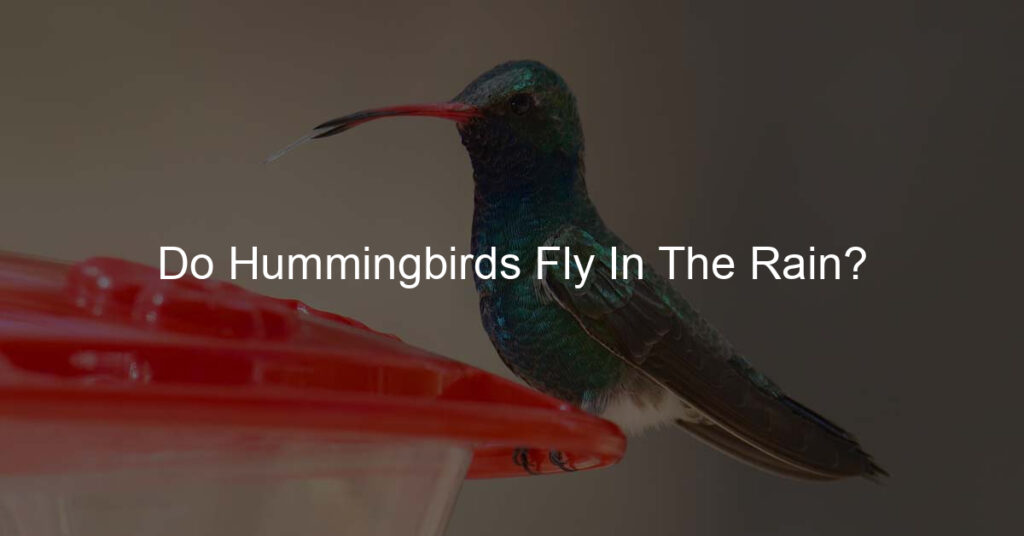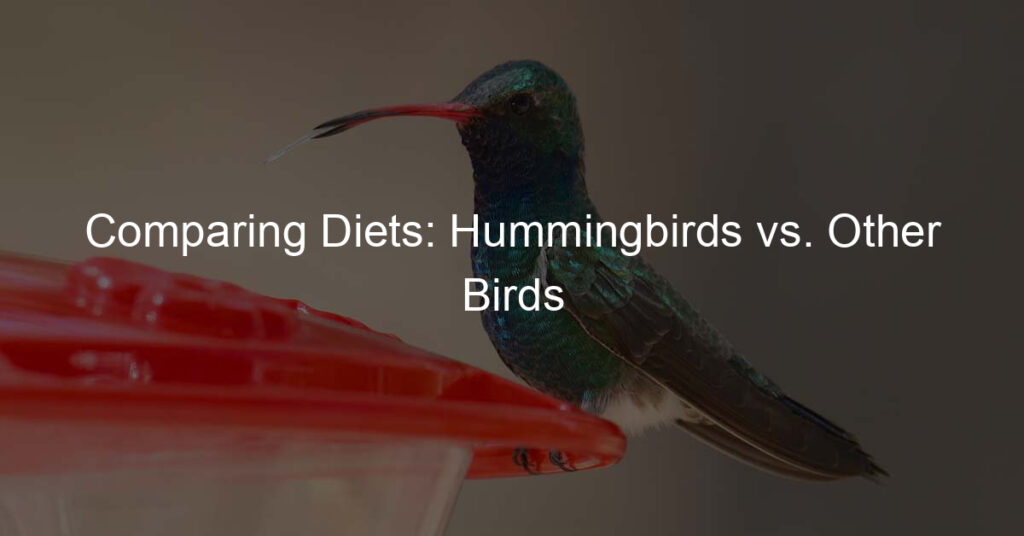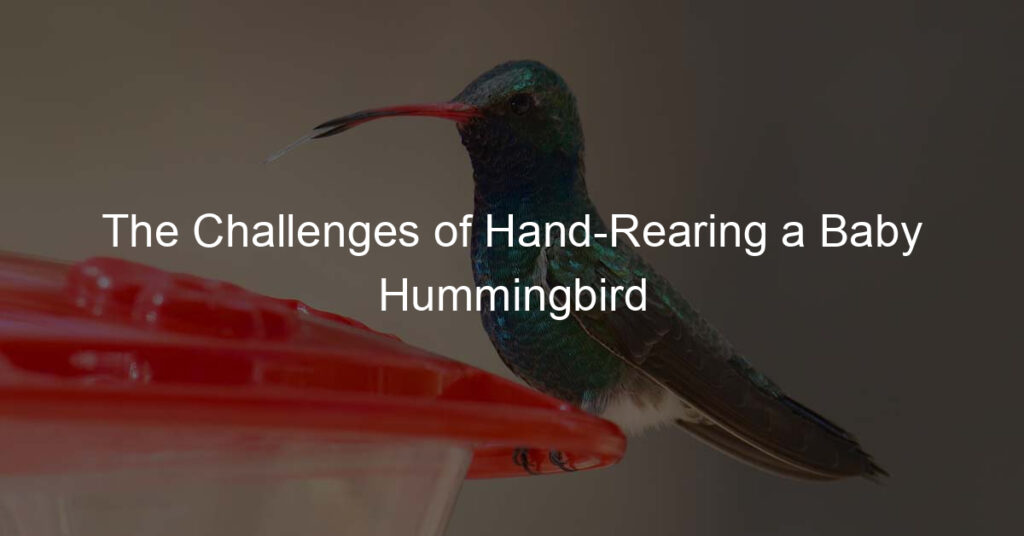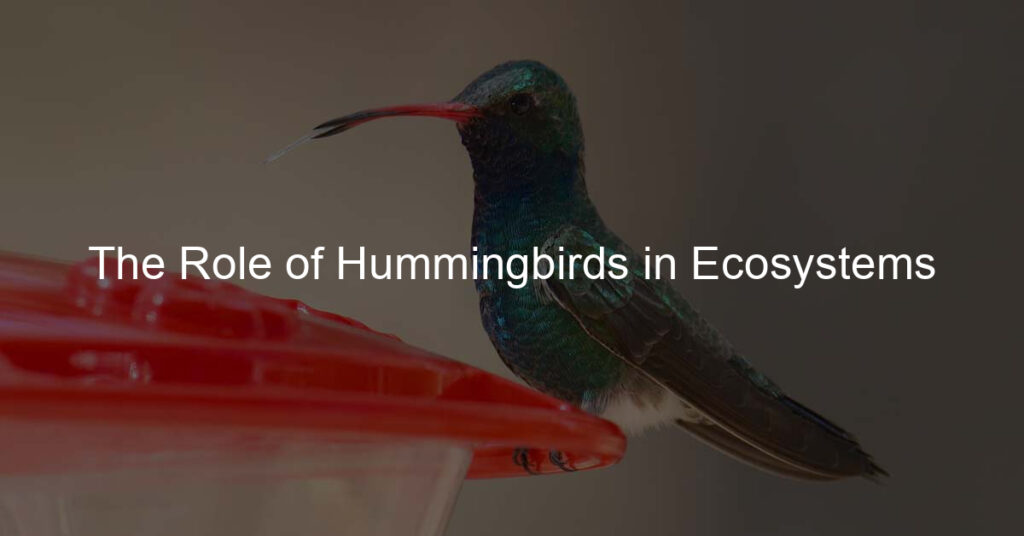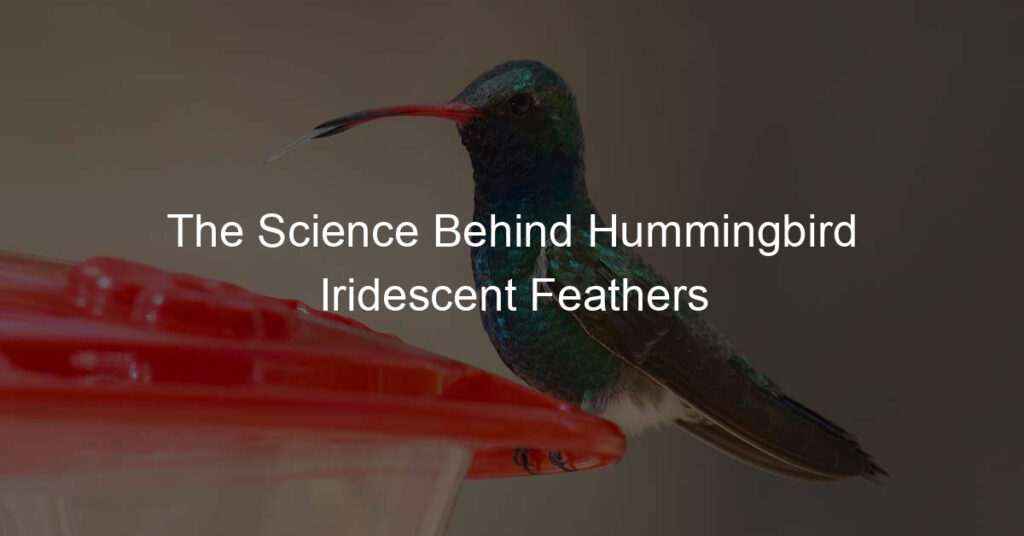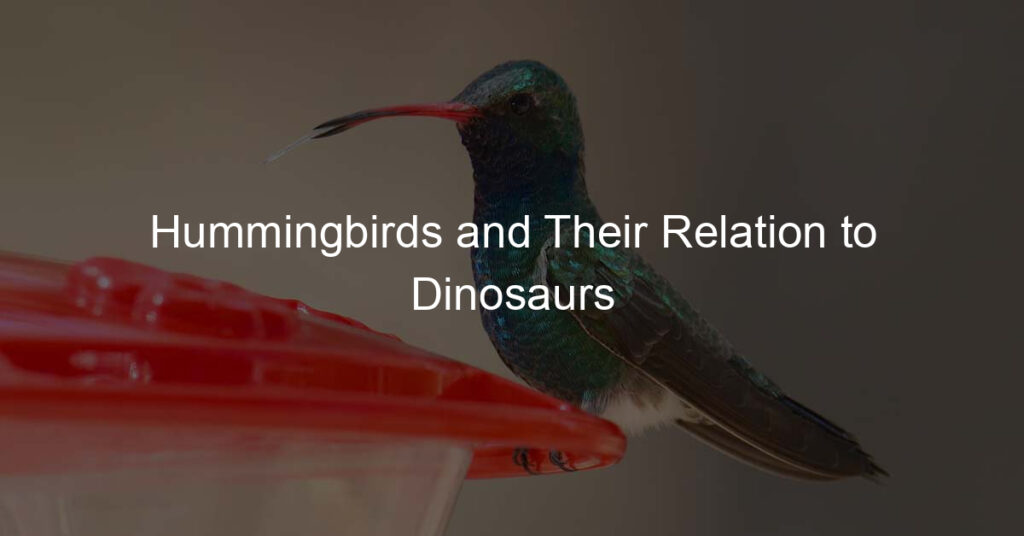Introduction: Hummingbird Behavior in Rain
Welcome to our exploration of the fascinating world of hummingbirds, specifically their behavior in the rain. These tiny creatures are known for their speed and agility, but how do they manage when the weather turns wet? Let’s dive in and find out.
Overview of Hummingbird Behavior
Hummingbirds are small birds known for their rapid wing beats and ability to hover in mid-air. They are native to the Americas and are recognized for their bright, iridescent colors and long, slender beaks. Hummingbirds feed mainly on nectar from flowers, but they also eat insects and spiders for protein. Their high-speed lifestyle requires a lot of energy, so they need to eat a lot. In fact, they can consume up to twice their body weight in food each day!
These birds are solitary by nature and are fiercely territorial. They have been observed to chase away other birds that come too close to their food sources. Despite their small size, hummingbirds are not afraid to stand their ground.
Hummingbirds are also known for their remarkable migration patterns. Some species travel over 500 miles non-stop over the Gulf of Mexico to reach their winter homes. This is an incredible feat for such a small bird!
Learn more about hummingbirds on Wikipedia
Specific Focus on Hummingbird Behavior in Rain
When it comes to rain, hummingbirds don’t let a little wet weather slow them down. They have been observed flying in light rain. Their fast wing beats (up to 80 times per second!) create a sort of umbrella, which helps to keep them dry.
However, in heavy rain, hummingbirds will seek shelter in trees or shrubs to stay dry. They may also fluff up their feathers to trap air and create insulation to keep warm. Despite these precautions, hummingbirds will still venture out in search of food, even in bad weather.
Interestingly, rain can also be beneficial for hummingbirds. After a rain shower, they can often be seen bathing on wet leaves and drinking raindrops from leaves and flowers. This behavior helps them to stay clean and hydrated.
Learn more about hummingbird behavior in rain on Wikipedia
Hummingbirds Flying in Bad Weather
Hummingbirds are fascinating creatures known for their speed and agility. But how do they fare in bad weather, particularly during storms? Let’s explore.
Do Hummingbirds Fly in Storms?
Contrary to what one might think, hummingbirds do not always seek shelter when the weather turns bad. In fact, they have been observed flying in storms. Let’s look at some case studies and scientific explanations for this behavior.
Case studies of hummingbird flight during storms:
In a study conducted by the Cornell Lab of Ornithology, hummingbirds were observed continuing their feeding routines even during a storm. The birds were seen darting in and out of the rain, seemingly unaffected by the harsh conditions. Another case study from the Audubon Society reported similar findings, with hummingbirds exhibiting normal behavior during a thunderstorm.
Scientific explanations for this behavior:
Scientists believe that hummingbirds’ ability to fly in storms is due to their unique wing structure and rapid wing beats, which allow them to maintain stability even in turbulent conditions. Additionally, their small size and lightweight bodies enable them to maneuver through raindrops with relative ease. This behavior also suggests that feeding is a high priority for hummingbirds, even in adverse weather conditions.
In conclusion, while it may seem surprising, hummingbirds have been observed to continue their activities even during storms. Their unique physical attributes and high feeding needs may explain this seemingly fearless behavior.
Hummingbird Flight Patterns in Bad Weather
Hummingbirds are fascinating creatures, capable of flying in conditions that would ground many other birds. Let’s explore how they manage this feat.
How hummingbirds navigate in bad weather
Despite their small size, hummingbirds are surprisingly resilient in bad weather. When storms hit, they don’t just hide away. Instead, they continue to fly, using their incredible agility to navigate through the raindrops. They can change direction quickly, darting between drops with ease. This is possible due to their fast wing beats – up to 80 times per second – and their ability to hover in place. This combination of speed and control allows them to navigate through even the heaviest downpours.
Adaptations that allow for flight in bad weather
Hummingbirds have several unique adaptations that help them fly in bad weather. One of these is their ability to enter a state of torpor, a deep sleep-like state, when the weather is particularly harsh. This allows them to conserve energy until conditions improve.
Another adaptation is their feathers. Hummingbird feathers are waterproof, helping to keep them dry even in heavy rain. Their feathers are also incredibly dense, providing insulation against the cold. This combination of waterproofing and insulation enables them to withstand bad weather conditions and continue their flight.
Finally, their unique wing structure allows them to hover in place and change direction quickly, making it easier for them to navigate through raindrops. Their wings can rotate in a full circle, which is not common among other bird species. This gives them excellent maneuverability in the air, even during a storm.
In conclusion, hummingbirds are well-equipped to handle bad weather. Their fast wing beats, ability to enter a state of torpor, waterproof and insulating feathers, and unique wing structure all contribute to their resilience. So, the next time you see a hummingbird darting through the rain, you’ll know just how remarkable these tiny creatures are.
Hummingbird Rain Habits
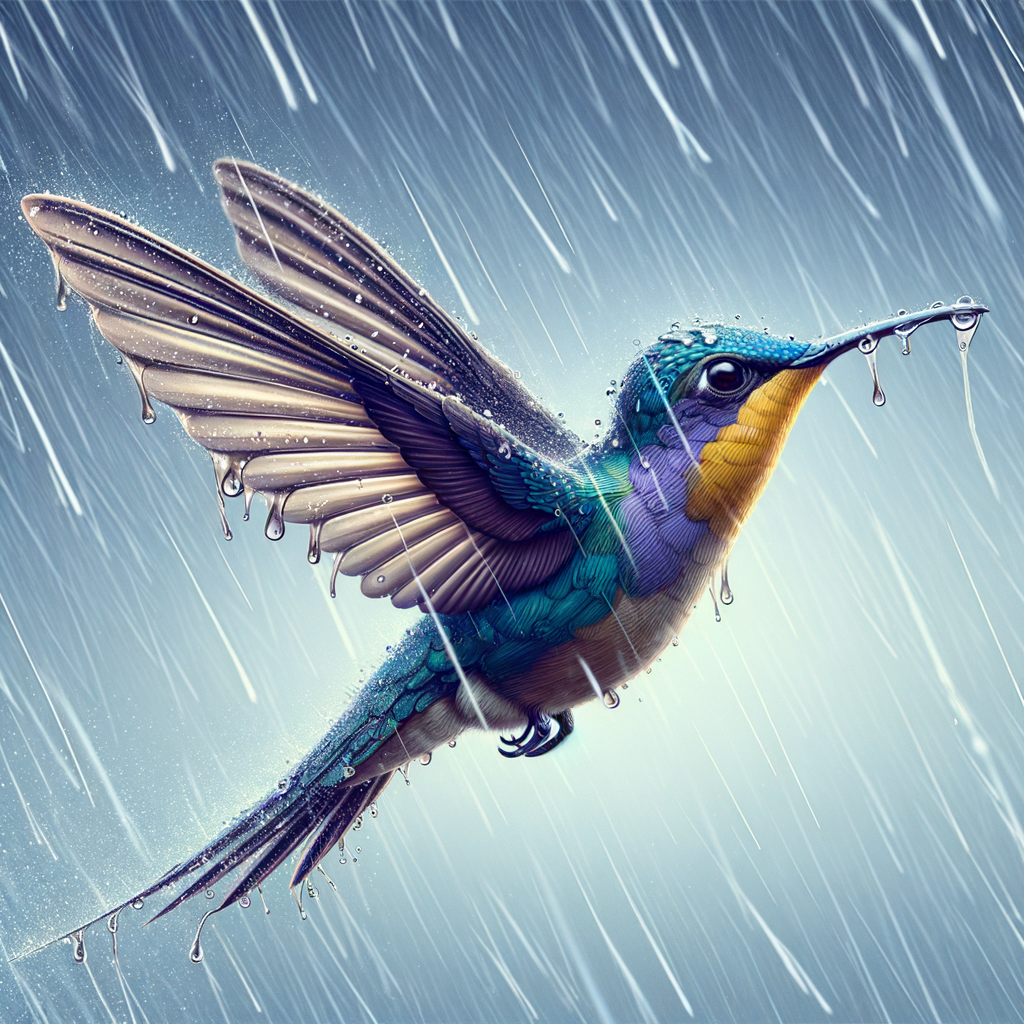
Hummingbirds are fascinating creatures with unique behaviors, especially when it comes to rain. Let’s delve into how rain affects their activities.
Rain and Hummingbird Activity
Rain can have a significant impact on hummingbird behavior, particularly their feeding and mating habits. Here’s how:
How rain affects hummingbird feeding and mating habits: Rain can make it difficult for hummingbirds to feed. The weight of the water on their wings can slow them down, making it harder to hover over flowers for nectar. As for mating, male hummingbirds perform intricate aerial displays to attract females. However, heavy rain can disrupt these displays, potentially affecting their mating success.
Examples of rain-induced changes in hummingbird activity: During light rain, hummingbirds may continue their usual activities, albeit at a slower pace. However, in heavy rain, they often seek shelter and remain inactive until the rain subsides. For instance, a study observed that Anna’s Hummingbirds, native to the west coast of North America, significantly reduced their activity during heavy rainfalls. They were found taking shelter in trees and bushes, resuming their activities once the rain stopped.
Understanding the impact of rain on hummingbirds can help us better appreciate these tiny creatures and their resilience in the face of nature’s challenges.
Can Hummingbirds Fly in the Rain?
Hummingbirds, known for their vibrant colors and rapid wing movements, are a fascinating species. But, have you ever wondered if these tiny creatures can fly in the rain? Let’s delve into the scientific findings and key takeaways on this topic.
Scientific Findings on Hummingbird Flight in Rain
Research shows that hummingbirds are indeed capable of flying in the rain. A study published in the Journal of Experimental Biology reveals that hummingbirds can adjust their flying techniques to accommodate the additional weight of raindrops on their wings. They achieve this by increasing their wing stroke amplitude and frequency, allowing them to maintain stability and control during flight.
Interestingly, hummingbirds also have a unique ability to shake off water from their bodies while in flight, similar to how a dog shakes off water. This ability helps them shed the extra weight of the water, enabling them to continue flying even in heavy rain.
Key Takeaways on Hummingbird Rain Flight
There are several important points to remember about hummingbirds and their ability to fly in the rain:
Hummingbirds can fly in the rain, but they adjust their flight techniques to handle the extra weight of the raindrops.
They have a unique ability to shake off water while in flight, shedding the extra weight and allowing them to maintain flight.
Despite their ability to fly in the rain, hummingbirds prefer not to. They will often seek shelter during heavy rainfall and resume their activities once the rain has stopped.
In conclusion, while rain does present challenges to hummingbirds, these remarkable creatures have adapted to handle such conditions. They are a testament to the resilience and adaptability of nature.
Hummingbird Behavior During Rainfall
Hummingbirds are fascinating creatures, known for their speed and agility. However, their behavior can change significantly during rainfall. Let’s delve into how weather conditions, particularly rain, impact their flight patterns.
Weather Effects on Hummingbird Flight
Weather plays a crucial role in the flight patterns of hummingbirds. Various conditions can affect their ability to fly, feed, and navigate. Let’s explore this in more detail.
How weather conditions impact hummingbird flight patterns
Hummingbirds are incredibly agile, capable of flying at speeds up to 34 miles per hour. However, adverse weather conditions can hinder their flight. For instance, strong winds can blow them off course, while heavy rain can weigh them down, making it harder for them to maintain their speed and agility. Cold weather can also slow down their metabolism, reducing their energy levels and making flight more difficult.
Specific effects of rainfall on hummingbird flight
Rainfall, in particular, can have a significant impact on hummingbird flight. The weight of the water droplets can make it harder for them to fly, forcing them to expend more energy. Additionally, rain can obscure their vision, making it more challenging to find food and avoid predators. However, hummingbirds have adapted to these challenges in remarkable ways. For example, they can shake off water in mid-air, much like a dog, to reduce the extra weight and maintain their flight.
In conclusion, while weather conditions can pose challenges to hummingbirds, these remarkable creatures have evolved to adapt and survive in a variety of conditions. Understanding these adaptations can help us better appreciate the resilience and adaptability of these tiny birds.
Hummingbird Flight in Wet Conditions
Hummingbirds, known for their vibrant colors and rapid wing movement, face unique challenges when flying in wet conditions. However, these tiny creatures have developed remarkable adaptations to overcome these difficulties. Let’s delve into the challenges they face and the strategies they employ to navigate through the rain.
Challenges Hummingbirds Face When Flying in Wet Conditions
Hummingbirds, like all birds, are affected by weather conditions. Rain, in particular, presents several challenges:
Weight Gain: Raindrops clinging to a hummingbird’s feathers can significantly increase its weight, making flight more strenuous.
Reduced Visibility: Heavy rain can obstruct a hummingbird’s vision, making it difficult to locate food sources or avoid obstacles.
Energy Consumption: The energy required to fly in wet conditions is much higher, which can be taxing for these small birds that already have a high metabolic rate.
How Hummingbirds Overcome These Challenges
Despite these challenges, hummingbirds have evolved several strategies to cope with wet conditions:
Fast Wing Beat: Hummingbirds can beat their wings up to 80 times per second, which helps shake off water and maintain body temperature.
Hovering Ability: Their unique ability to hover in place allows them to feed even in heavy rain, unlike many other bird species.
Energy Conservation: When food is scarce due to bad weather, hummingbirds can enter a state of torpor, a deep sleep-like state, to conserve energy.
To learn more about hummingbirds and their adaptations, visit the Hummingbird Wikipedia page.
In conclusion, while rain presents significant challenges to hummingbirds, these resilient creatures have developed unique adaptations that allow them to survive and even thrive in wet conditions.
Conclusion: Understanding Hummingbird Rain Flight
In this article, we have delved into the fascinating world of hummingbirds and their unique behavior during rainfall. Let’s summarize the key points and discuss the implications for birdwatchers and nature enthusiasts.
Summary of key points on hummingbird flight in rain
Hummingbirds are remarkable creatures capable of flying in adverse weather conditions, including rain. Their unique wing structure and rapid flapping rate allow them to maintain stability and control even in heavy downpours. They have a special preening gland that secretes an oil, helping them waterproof their feathers. Furthermore, their ability to enter a state of torpor helps them conserve energy during cold, rainy nights. Learn more about hummingbirds on Wikipedia.
Implications for birdwatchers and nature enthusiasts
Understanding hummingbird behavior in the rain can enhance the birdwatching experience. It can help birdwatchers predict hummingbird activity during different weather conditions and plan their outings accordingly. For nature enthusiasts, this knowledge can deepen their appreciation of these tiny birds’ resilience and adaptability. It also underscores the importance of providing suitable hummingbird feeders and shelters in our gardens to support them during harsh weather.
In conclusion, hummingbirds’ ability to fly in the rain is a testament to their extraordinary adaptability and survival skills. The next time you see a hummingbird zipping through the rain, remember the incredible biological adaptations that make this feat possible.

